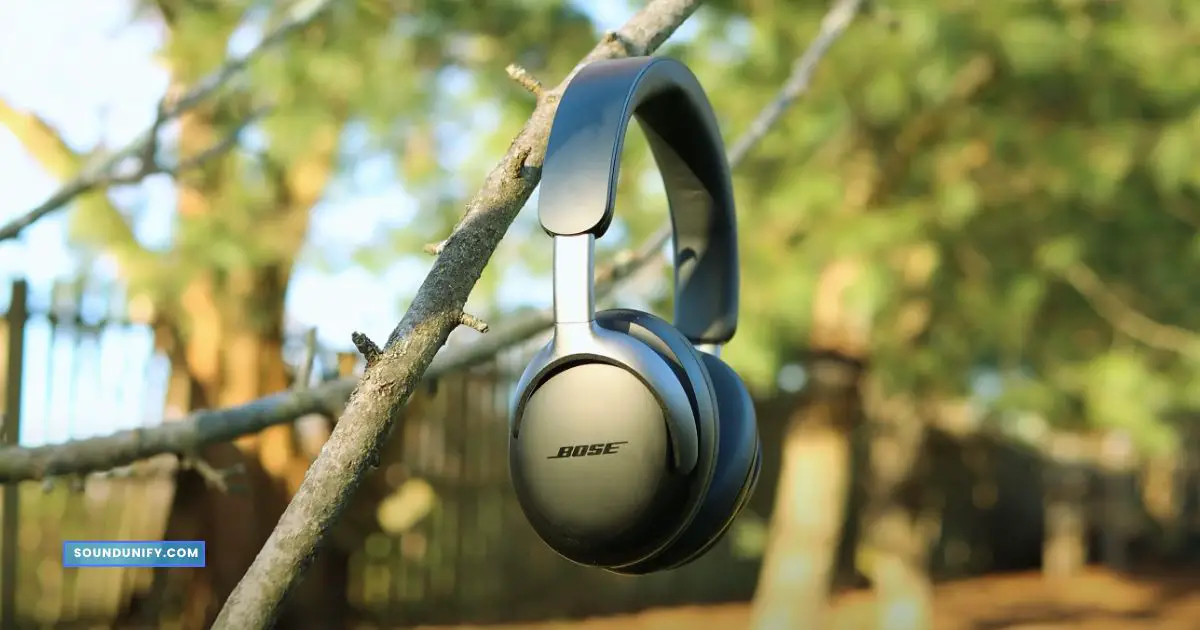Bose QC Ultra Headphones: Revolutionary or Just a Step Up? Let's find out.
Today, I’m diving into the world of the Bose QC Ultra Headphones, Bose’s latest foray into the realm of active noise-canceling (ANC) technology. These aren’t just any headphones; they’re the successors of the renowned Bose NC 700. So, the big question is whether they are a groundbreaking leap forward or just a notch above their predecessor.
As I walk you through my in-depth review, we’ll scrutinize every facet of the QC Ultra. I’ve covered everything from their sleek design and comfort to the technical nitty-gritty. And let’s not forget the audio performance – that’s the heart of the matter, right? I’m sharing my thoughts on whether these headphones justify their price tag. Are they worth the splurge for audiophiles and casual listeners alike?
Join me as I unravel the mysteries of the Bose QC Ultra Headphones. Whether you’re mulling over an upgrade or curious about stepping into the high-end ANC territory, I’m here to guide you. Let’s start this sonic exploration and see if these headphones resonate with the hype.
| Feature/Aspect | Bose QC Ultra Headphones | Bose NC 700 Headphones |
|---|---|---|
| Retail Price | Check The Best Price | Check The Best Price |
| Design | Fully collapsable design | Lay flat design |
| Carrying Case | Smaller footprint than NC 700, hardshell case | Larger compared to QC Ultra, hardshell case |
| Build Quality | USB-C port, 15 minutes charge for 3 hours of playtime | More premium feel with exposed aluminum |
| Comfort | Neutral fit, big head approved | Similar comfort, more premium headband |
| Weight | 254 grams | 264 grams |
| Battery Life | 24 hours with ANC, 18 hours with immersive audio | 20 hours with ANC |
| Charging | Same, it must be powered on | USB-C port |
| Connectivity | Can connect to 2 devices simultaneously | Same |
| Audio Codec Support | SBC and AAC only | Same |
| Wired Connection | Same, it must be powered on | Same, must be powered on |
| Sound Profile | Neutral, better clarity in the highs | Neutral |
| Immersive Audio Feature | Significant emphasis on vocals and instrument separation | No immersive audio feature |
| ANC Performance | Better than NC 700 and QC45 | Good but not as effective as QC Ultra |
| Ambient Mode | Natural sound, active ambient mode | Natural sound, no active ambient mode |
| Microphone Quality | Better clarity and noise reduction | Decent clarity and noise reduction |
1. Design and Build Quality: Bose QC Ultra Headphones vs. Bose NC 700
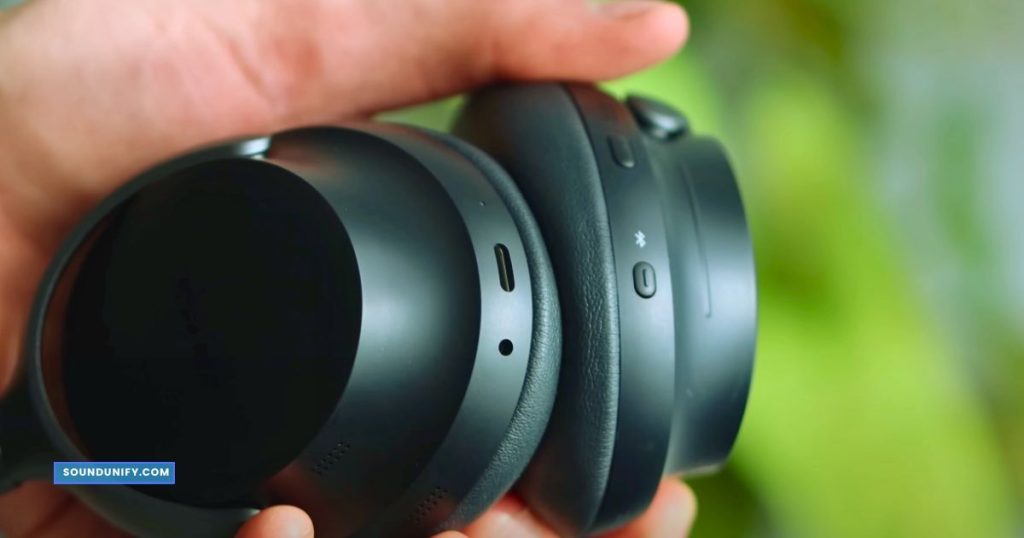
As we delve into the design and build quality of the Bose QC Ultra Headphones, it’s clear that Bose has made some notable changes, distinguishing them from their predecessor, the Bose NC 700. Let’s break down these aspects to understand how these changes impact the user experience.
Carrying Case
- Design Evolution: The Bose QC Ultra comes with a hardshell case, similar to its predecessor, but with a few essential modifications. The case is designed to be compact, recognizing the needs of frequent travelers.
- Comparison with NC 700’s Case: The QC Ultra’s case is slightly smaller than the NC 700’s due to the headphones’ fully collapsible design, as opposed to the NC 700’s lay-flat structure. This results in a more compact and travel-friendly profile.
- Other Competitors: Compared to other models in the market, like the Sony 1000XM5 or Sennheiser Momentum 4, the QC Ultra case stands out for its smaller size and superior protection. They offer a significant upgrade over competitors’ cases, like Beats Studio Pro or AirPods Max.
Headphones Design
- Fully Collapsible vs. Lay Flat: The QC Ultra boasts a fully collapsible design, a stark contrast to the lay-flat design of the NC 700. This feature enhances portability and influences the case size and shape.
- Aesthetic and Ergonomic Considerations: The design choices reflect Bose’s commitment to combining aesthetics with functionality, catering to users who prioritize style and practicality in their audio devices.
Build Quality
- Material Selection: The QC Ultra features plastic ear cups with well-engineered pivot and swivel mechanisms, accompanied by aluminum arms for durability. The headband is a mix of plastic and cushioned leatherette.
- Comparison with NC 700: Despite their robust construction, the QC Ultra doesn’t quite match the premium feel of the NC 700, which boasts more exposed aluminum and a more luxurious headband with super-padded silicon.
- Leatherette Quality: Though decent, the leatherette on the QC Ultra falls slightly short compared to the more supple and softer leatherette of the NC 700 and Bose QC45.
2. Comfort and Fit: Fine-Tuning the Experience with Bose QC Ultra Headphones
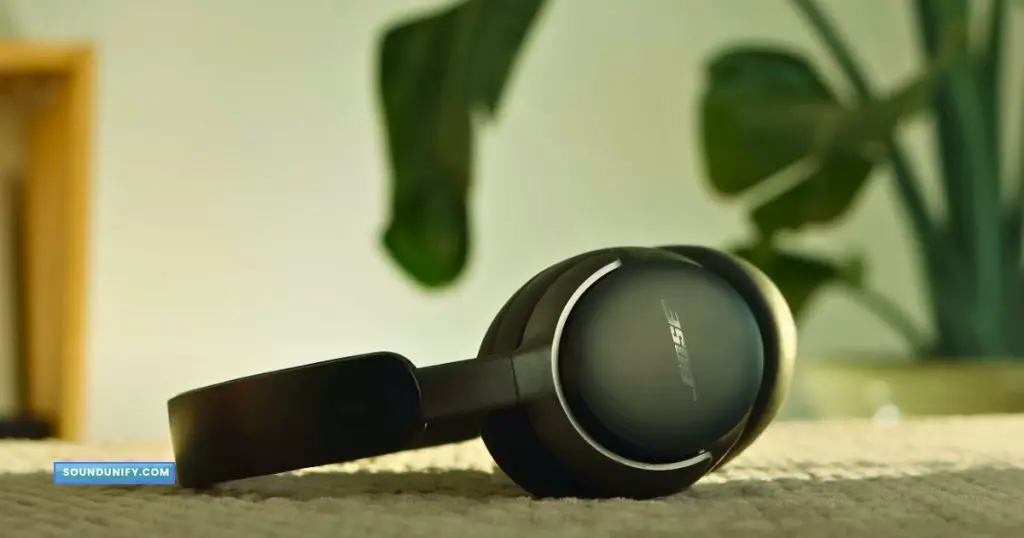
The Bose QC Ultra Headphones take a stride forward in comfort and fit, an essential aspect for users who wear headphones for extended periods. Let’s examine how these headphones compare to their predecessor, the Bose NC 700, and what improvements have been made.
Clamping Force and Fit
- Neutral Fit: The QC Ultra is designed with a neutral clamping force, striking a balance between being too loose and too tight. This design ensures they are comfortable for a wide range of head sizes and shapes, including those with larger heads.
- Big Head Approved: These headphones are exceptionally accommodating for users with larger heads or wearing hats, offering ample space without compromising stability.
- Comparison with Bose QC and QC45: Regarding looseness, the QC Ultra is not as loose-fitting as the Bose QC or QC45. This might be a consideration for users who prefer a more relaxed fit.
Ear Pads
- Spacious Design: The ear cups on the QC Ultra are generously sized, making them suitable for most ear types, including more oversized ears or ears that protrude.
- Improved Spacing: Compared to the NC 700, the Ultra’s ear pads offer slightly more room, enhancing comfort for a broader range of users.
- Heat Management: The design of the ear pads minimizes skin contact, contributing to better heat management and comfort over long listening sessions.
Headband
- Weight and Padding: The QC Ultra features a well-cushioned headband, which, combined with its lighter weight (254 grams compared to NC 700’s 264 grams), contributes to overall comfort and lessens the feeling of the headphones being noticeable during extended use.
- Comparison with NC 700: While the QC Ultra’s headband is comfortable, it does not quite match the softer, more conforming feel of the NC 700’s silicon-padded headband, which also offers a cooling effect.
- Overall Fit and Comfort: The QC Ultra scores high in providing a comfortable fit for extended periods, thanks to its spacious ear cups, balanced clamping force, and lighter weight. However, some users might miss the premium headband feel of the NC 700.
3. Technical Specifications: Advanced Features of Bose QC Ultra Headphones
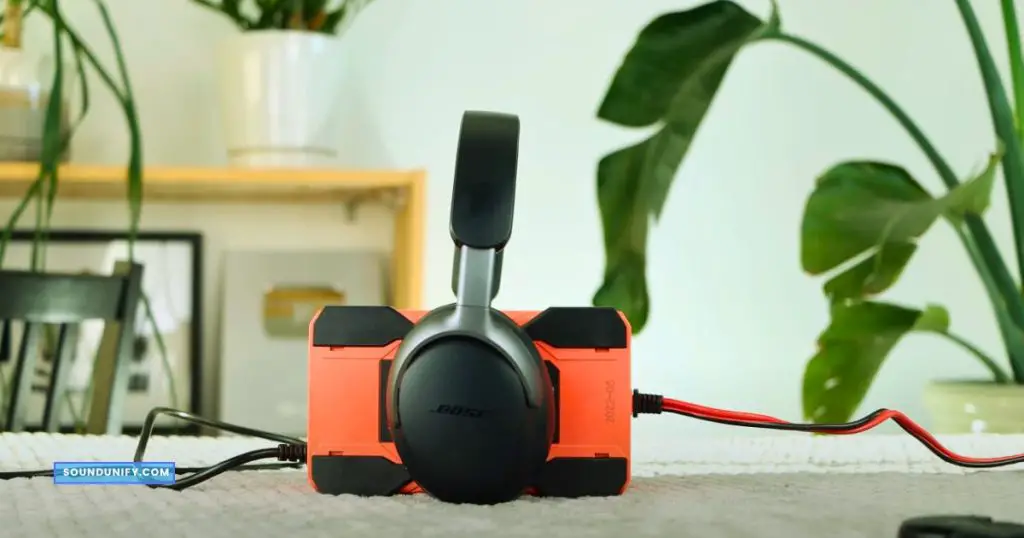
The Bose QC Ultra Headphones come with various technical specifications that set them apart in the competitive field of ANC headphones.
Battery Life
- Extended Duration: The QC Ultra boasts an advertised battery life of 24 hours with ANC on, surpassing the NC 700’s 20-hour battery life.
- Impact of Immersive Audio Feature: Utilizing the immersive audio feature reduces the battery life to 18 hours, indicating a trade-off between enhanced audio experience and battery longevity.
- Comparison with Industry Standards: While 24 hours is commendable, it falls short of the 30-hour benchmark increasingly common in premium ANC headphones.
Charging and Power Management
- USB-C Charging: In line with modern standards, the QC Ultra uses a USB-C port for charging.
- Fast Charging: The fast charging feature is somewhat limited; a 15-minute charge provides 3 hours of playback, which, while helpful, lags behind competitors.
- Non-Discretionary ANC Use: The inability to turn off ANC or ambient mode limits battery conservation options, a notable drawback for users seeking extended use without frequent recharging.
Connectivity
- Multi-Device Connection: The headphones support simultaneous connection to two devices, facilitating seamless switching – a feature highly beneficial for power users across different ecosystems.
- Latency and Codec Support: The QC Ultra shows zero latency in media consumption across devices and supports SBC and AAC codecs. However, it lacks support for higher-quality audio codecs.
Wired Connection Options
- Versatile Usage: They retain an audio jack for wired connections, which helps plug into in-flight entertainment systems or monitor content creation.
- Connection Limitations: Using a 2.5mm audio jack instead of the more standard 3.5mm is a consideration. The headphones cannot be used passively; they require power even when wired, and the USB-C port does not support audio transmission.
4. Audio Performance: Dissecting the Sound of Bose QC Ultra Headphones
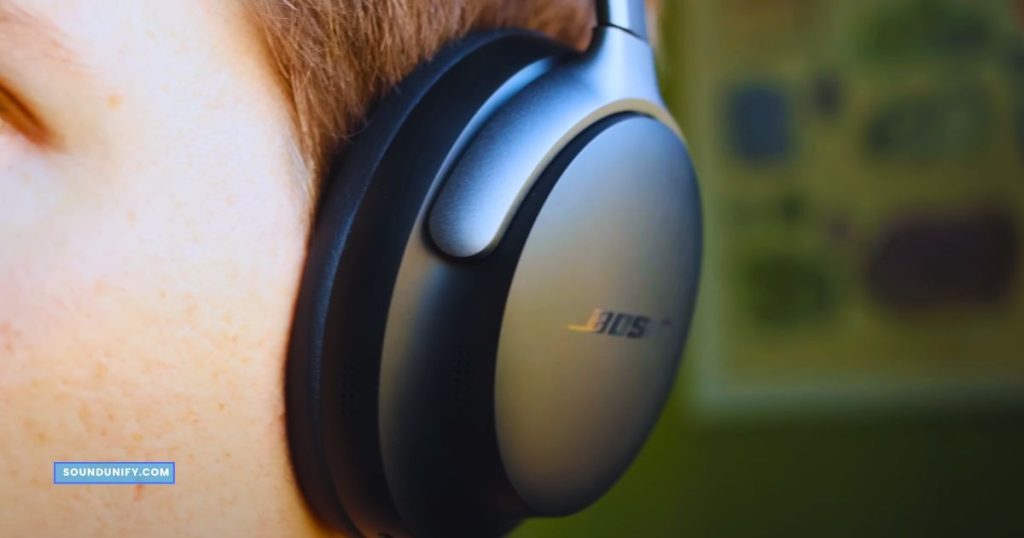
In premium ANC headphones, audio performance is a critical factor. The Bose QC Ultra Headphones, with their features, promise an immersive listening experience.
Sound Profile
- Neutral Sound: The QC Ultra headphones have a neutral sound profile, where the bass is present but not overpowering. This neutrality caters to users who prefer a balanced audio experience without excessive bass.
- Bass Characteristics: While the bass is audible, it does not dominate the overall sound, which might be perceived as lacking by users who prefer bass-heavy audio. However, this is a deliberate design choice for a more natural sound.
- EQ Customization: Users have the option to adjust the EQ settings. Even with increased bass settings, the headphones maintain their characteristic sound profile without extreme bass vibration.
Immersive Audio Feature
- Distinctive Audio Enhancement: The immersive audio feature significantly alters the soundstage, emphasizing vocals and instrument separation. This feature provides a more open and expansive listening experience.
- Comparison with NC 700: When the immersive audio is turned off, the QC Ultra and NC 700 are similar in sound performance. The immersive audio feature, however, sets the QC Ultra apart, offering a noticeably different and enhanced audio experience.
- Battery Life Consideration: The immersive audio feature continuously impacts the battery life, reducing it from 24 to 18 hours. Users need to balance their desire for enhanced audio with battery longevity.
ANC Impact on Sound
- ANC Integration: The integration of ANC technology in the QC Ultra does not compromise the sound quality, maintaining clarity and richness even with noise cancellation activated.
- Cabin Pressure Sensation: While the QC Ultra offers effective noise cancellation, some users may experience a slight sensation of cabin pressure in noisy environments, although less intense than other models like the Bose QC35 or AirPods Max.
Overall Audio Experience
- Versatility and Quality: The Bose QC Ultra headphones cater to various audio preferences, offering high-quality sound across various genres and content types.
- Competition Comparison: In the broader ANC headphone market, the QC Ultra stands out for its neutral sound profile and innovative immersive audio features. However, it faces stiff competition from models with more pronounced bass and longer battery life.
5. Active Noise Cancellation (ANC) and Ambient Mode: Evaluating Bose QC Ultra Headphones
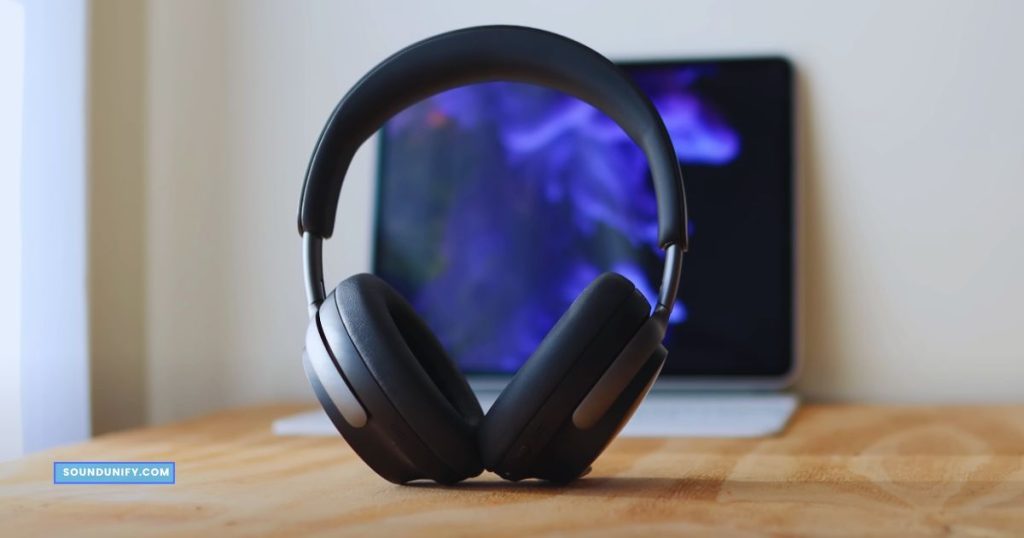
Active Noise Cancellation (ANC) and ambient mode are pivotal features in premium headphones, particularly in urban or noisy environments. The Bose QC Ultra Headphones promise advancements in these areas. Let’s explore their performance and how they compare with the Bose NC 700 and other models.
Active Noise Cancellation (ANC) Performance
- Superior ANC Technology: The QC Ultra headphones show remarkable improvement in ANC capabilities, surpassing the NC 700 and the QC45.
- Noise Blocking Efficiency: They effectively block out a significant amount of ambient noise, making them ideal for busy offices, public transport, or flights.
- Cabin Pressure Sensation: While effective in noise cancellation, the QC Ultra can create a sensation of cabin pressure in high-noise environments, though less intense than some other models.
Ambient Mode Quality
- Natural Sound Reproduction: The ambient mode in the QC Ultra is designed to sound very natural, with no noticeable hissing or artificial amplification, enhancing user comfort during prolonged use.
- Wind Noise Management: The microphone array efficiently blocks wind noise, which is particularly beneficial for outdoor use.
- Active Ambient Mode Protection: A notable feature is the active ambient mode that reacts to sudden loud noises by temporarily shutting off, protecting the user’s hearing.
Limitations and Comparison
- Lack of Adjustability: Unlike the NC 700 and some other competitors, the QC Ultra does not allow for adjustments in the level of ambient noise let in, which could be a limitation for users seeking more control.
- Sensitivity and Reaction Time: The active ambient mode is somewhat slow to react and can be overly sensitive, leading to inconsistent audio experiences in environments with fluctuating noise levels.
Overall ANC and Ambient Mode Experience
- Enhanced ANC Capabilities: The QC Ultra stands out for its improved ANC performance, offering one of the best noise-cancellation experiences in the market.
- Ambient Mode Functionality: While the natural sound and wind noise management are impressive, the active ambient mode’s lack of adjustability and sensitivity may not suit all users.
- Comparison with Predecessor and Competitors: The QC Ultra significantly improved over the NC 700 and outperformed many competitors. However, the nuanced control and response of the ambient mode could be further refined.
6. Controls and User Interface: Navigating the Bose QC Ultra Headphones
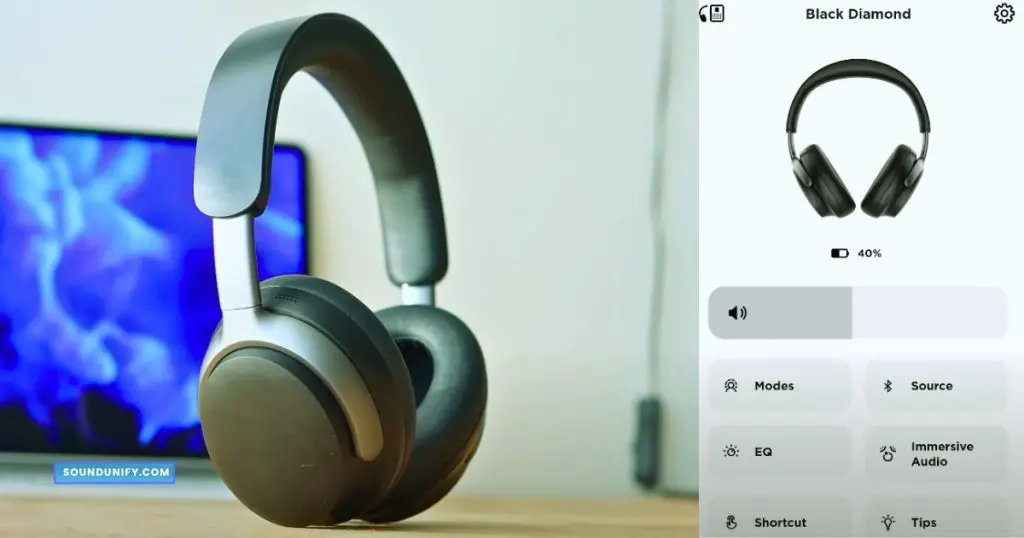
The Bose QC Ultra Headphones have an updated control scheme and user interface to enhance the overall user experience.
Media Controls
- Physical Button vs. TouchPad: Unlike the NC 700, which relies on a touchpad for media control, the QC Ultra incorporates a physical button for play/pause, track skipping, and a touch surface for volume adjustments.
- User Feedback: Some users might find the physical button more intuitive and reliable than a touchpad, especially when precise control is needed.
Volume Adjustment
- Touch Surface for Volume: The QC Ultra introduces a new method for adjusting volume via a touch surface. However, this feature has received mixed responses.
- Issues Faced: Users have reported challenges with the touch surface, including large step increments in volume adjustment, inconsistent responses, and occasional missed inputs. This contrasts with the more precise and reliable control on the NC 700’s touchpad.
Shortcut Features
- Customizable Shortcuts: The QC Ultra allows users to assign custom shortcuts to the touchpad, adding a layer of personalization to the user experience.
- Potential for Firmware Updates: There’s room for Bose to improve the touchpad functionality through future firmware updates, addressing current user concerns.
Wear Sensors
- Automatic Play/Pause: Wear sensors are a new addition to the QC Ultra. These sensors pause the music when the headphones are removed and resume playback when put back on.
- Optional Use: For those who find wear sensors unnecessary, Bose can turn off this feature, catering to different user preferences.
Overall User Experience
- Comparison with NC 700: The QC Ultra introduces several changes in controls compared to the NC 700 to provide a more tactile and intuitive user experience. However, some of these changes, particularly the touch surface for volume control, have not been as well-received as expected.
- Room for Improvement: While innovative, the control scheme of the QC Ultra seems to require fine-tuning to match the user-friendliness and reliability of the NC 700.
7. Microphone Quality: Assessing the Bose QC Ultra Headphones
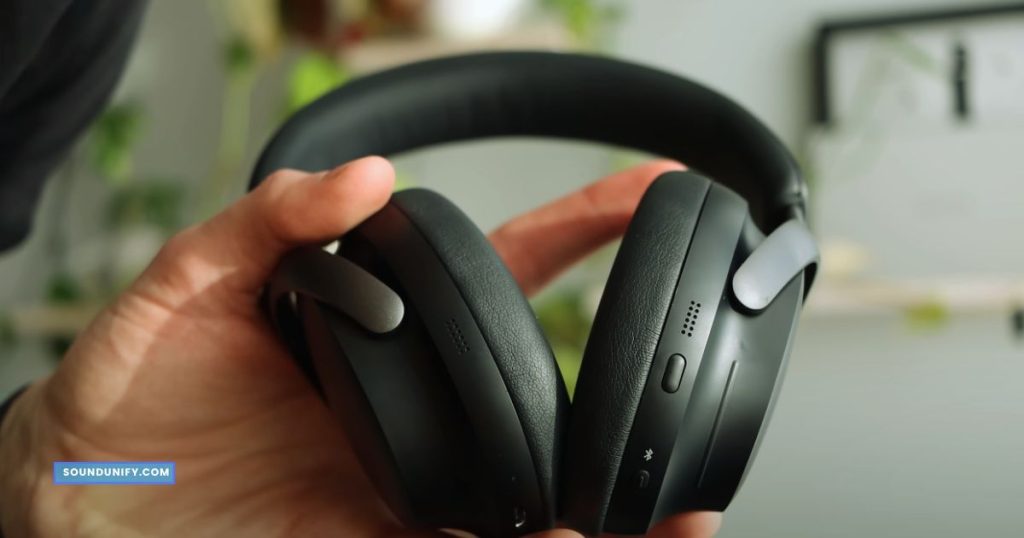
The microphone quality of headphones is crucial, especially for users who frequently make calls or engage in voice chats. The Bose QC Ultra Headphones boast enhancements in this area. Let’s evaluate their microphone performance compared to the Bose NC 700 and other models.
Microphone Clarity
- Enhanced Clarity: The QC Ultra features a microphone that offers improved clarity over its predecessor, the NC 700 and the QC45. This enhancement is particularly noticeable in quieter environments, where voice reproduction is crisp and clear.
- Performance in Various Settings: The microphone quality remains robust in different settings, adequately capturing voice without significant distortion.
Noise Handling Capabilities
- Noise Pollution Reduction: A standout feature of the QC Ultra’s microphone is its ability to reduce background noise effectively. This makes it suitable for calls in noisy environments, ensuring the user’s voice remains the focus.
- Comparison with Other Models: Compared to the NC 700 and QC45, the QC Ultra performs better noise handling, offering more apparent voice transmission amidst ambient sounds.
Limitations and Considerations
- Chatter Blocking: In scenarios with multiple people talking, the QC Ultra’s microphone shows its strengths by filtering out chatter to a considerable extent, although it can occasionally pick up echoes or background voices.
- Echo Effects: Some users may notice a slight echo effect when using the microphone in specific environments, a common issue with many ANC headphones.
Overall Microphone Performance
- Versatility and Reliability: The QC Ultra’s microphone is versatile and reliable for various uses, from casual conversations to professional calls.
- Superiority in Noise Reduction: Its ability to minimize background noise while maintaining voice clarity puts it ahead of many competitors, including its predecessor.
- Suitability for Various Users: Whether for personal use, remote work, or content creation, the QC Ultra’s microphone offers the quality and reliability that users expect from a premium set of headphones.
Comparative Analysis and Verdict: Bose QC Ultra Headphones vs. Bose NC 700 and Others
The Bose QC Ultra Headphones have made a significant entry in the competitive world of premium ANC headphones. Let’s compare them with their predecessor, the Bose NC 700, and other competitors, concluding with a verdict on whether they are worth the upgrade.
Advantages Over Bose NC 700
- Improved ANC Performance: The QC Ultra offers superior noise cancellation compared to the NC 700, making it more effective in a broader range of environments.
- Enhanced Audio Features: Introducing immersive audio and a more neutral sound profile with better instrument separation puts the QC Ultra ahead regarding audio quality.
- Better Microphone Quality: The microphone on the QC Ultra has better clarity and noise reduction capabilities, making it more suitable for calls and voice commands.
Shortcomings and Potential Improvements
- Battery Life: While the 24-hour battery life is commendable, the reduction to 18 hours with immersive audio is a notable limitation, especially for users who travel frequently.
- Control Scheme: The new control scheme, particularly the touch surface for volume control, has not been as well-received as expected and could benefit from refinement.
- Lack of Adjustability in Ambient Mode: The inability to adjust the ambient sound level is a drawback compared to the NC 700 and other competitors.
Comparison with Other Headphones
- Sony 1000XM5 and Others: The QC Ultra competes closely with high-end models like Sony’s 1000XM5, offering comparable ANC performance but differing sound profile and battery life.
- Market Positioning: The QC Ultra is a high-end product for users prioritize ANC performance and sound quality over extensive battery life or customizable controls.
Verdict
- Worth the Upgrade?: For owners of the Bose NC 700 or older models, the QC Ultra presents a significant upgrade in terms of ANC performance and audio quality. The improvements in microphone clarity and immersive audio features also add value.
- Considerations for New Buyers: New buyers should consider the QC Ultra if they prioritize top-tier ANC, sound quality, and microphone performance. However, exploring other options may be beneficial if more extended battery life and more customizable controls are critical.
- Overall Recommendation: The Bose QC Ultra Headphones are a strong contender in the premium ANC headphone market, offering a balanced mix of features that cater to audiophiles and everyday users alike. While they excel in several areas, potential buyers should weigh the improvements against their specific needs and preferences.
The Bose QC Ultra Headphones are a compelling upgrade for those seeking enhanced ANC and audio performance. They stand out in the market for their sound quality and noise cancellation capabilities, though certain aspects like battery life and control scheme could be improved. The QC Ultra is worth considering for users seeking a premium audio experience with effective noise cancellation.
Conclusion: Final Thoughts on the Bose QC Ultra Headphones
As we wrap up our comprehensive review of the Bose QC Ultra Headphones, it’s clear that these headphones are a significant player in the premium ANC market. Here are the key takeaways:
- Advanced ANC Performance: The Bose QC Ultra excels in active noise cancellation, surpassing its predecessor, the Bose NC 700, and competing effectively with other top-tier headphones. This makes them an excellent choice for users in noisy environments or frequent travelers.
- Superior Audio Experience: With its neutral sound profile and unique immersive audio feature, the QC Ultra offers a rich and detailed audio experience. The improved instrument separation and vocal emphasis provide an engaging listening experience.
- Comfort and Build Quality: The headphones score high on comfort, with a neutral clamping force, spacious ear cups, and a lighter weight than the NC 700. However, some users might find the build quality less premium than expected.
- Enhanced Microphone Quality: The QC Ultra stands out for its microphone performance, offering clear voice transmission and effective noise reduction, making it ideal for calls and voice commands.
- User Interface and Controls: While introducing physical buttons and wear sensors is a positive development, the touch surface for volume control needs refinement. Future firmware updates may address these concerns.
- Battery Life: The 24-hour battery life (reduced to 18 hours with immersive audio) is adequate, though it lags behind some competitors. Users prioritizing longer battery life might find this a limitation.
- Value for Money: Priced at $430, the QC Ultra is an investment. While they offer top-tier features, the price point might be a consideration for some potential buyers.
- Recommendation: The Bose QC Ultra is recommended for users looking for excellent ANC performance, high-quality sound, and comfortable long-term wear. They are particularly suited for audiophiles, professionals in noisy environments, and regular travelers.
James Dimento is a Chief-in-Editor of SoundUnify. He is a headphone enthusiast and creative writer passionate about audio technology. He has three years of experience writing about headphones and sound quality and is responsible for creating reviews and taking care of all administration.
